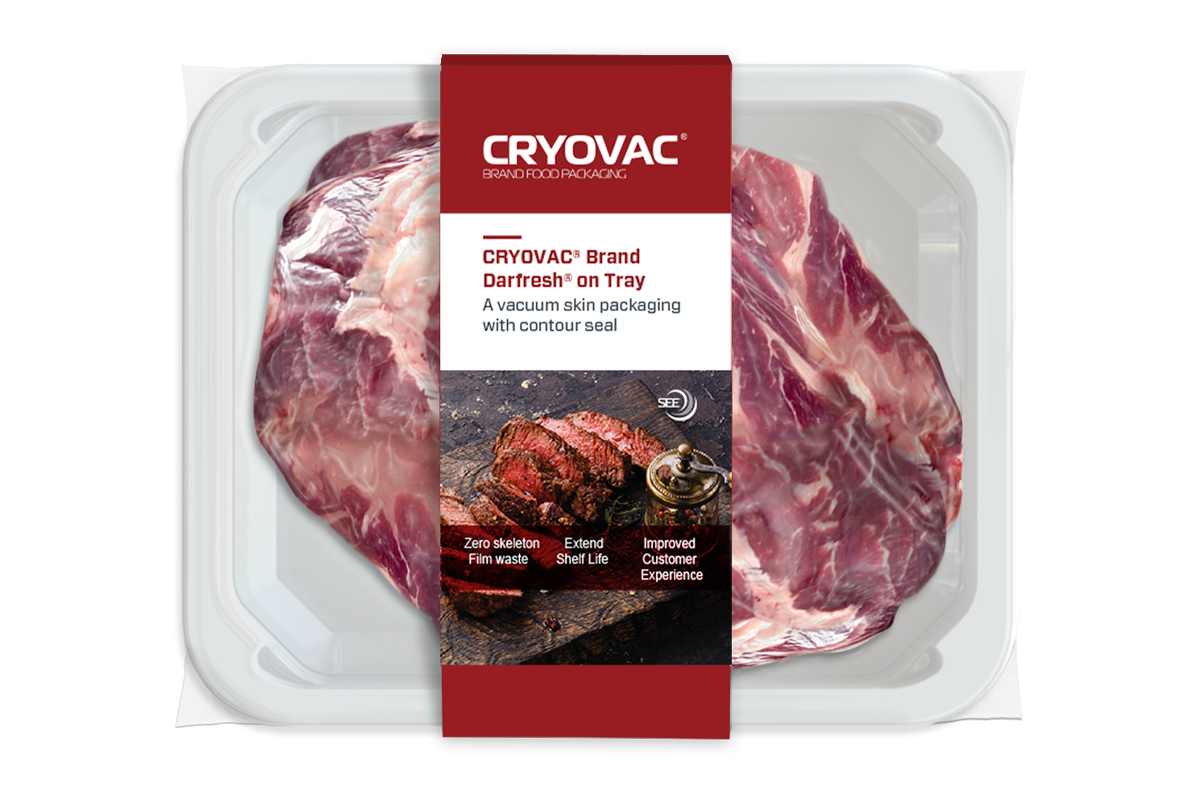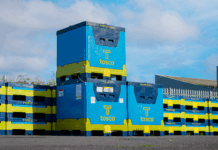This article contains paid-for content created in collaboration with SEE.
Sustainability is major trend for the European meat industry. It has the potential to significantly influence consumer attitudes and purchasing habits, and impact almost every part of the farm-to-fork supply chain. Stephanie Poole, Business Development Director at SEE explains why packaging, in particular, is so critical to this industry-defining trend.
The growing impact of going green
The EU’s agricultural outlook 2020-30 focuses on how sustainability objectives and changing consumer demands will impact the meat market during this decade. This acknowledges the challenges facing processors, as economies become more circular. Concerns about climate change are expected to see a decline in meat market outputs, with consumers possibly lowering their meat consumption to reduce environmental impact. Such a potential shift in the market highlights the growing importance of enhancing sustainability practices during processing to help ensure meat remains part of people’s regular grocery shopping choices.
Sustainability is a real catalyst for change. Meat processors are rising to the challenges of more responsible diets and food purchasing by investing in new solutions for reducing their overall environmental impact. They are continuously striving for methods to make meat a sustainable choice for consumers and increasingly turning their attention to packaging to achieve this.
Rethinking meat packaging
How packaging is perceived and procured is evolving. Previously, a price-first approach to packaging was widely taken by meat processors in a bid to reduce overheads and protect margins. The lowest priced packaging option would often be favoured in a market heavily affected by rising ingredient, raw material and energy costs.
The keen focus on price and closely managing costs has deterred some meat processors from considering innovations in packaging. They will have already invested in a widely used system such as Modified Atmosphere Packaging (MAP), believing this to be the most cost-effective and have often been reluctant to look at alternatives.
Sustainability is fast changing this approach to meat packaging procurement. There is a growing awareness about how high-performance packaging solutions can improve efficiencies, extend shelf life and minimise waste. It’s the combination of these factors that can improve environmental performance to enhance sustainability throughout supply chains.
MAP systems change the gaseous atmosphere to create a modified environment that aims to preserve meat for a limited duration. This format requires a degree of free space to be left around the meat, meaning the final package is often much larger than the food inside.
Last year, Sealed Air and G. Mondini S.p.A. celebrated the 10th anniversary of CRYOVAC® brand Darfresh® on Tray. The innovative packaging solution was developed in collaboration to provide a more efficient, high performance alternative to MAP. Rather than creating a modified environment, a vacuum skin solution has been designed to gently, and tightly, wrap around every contour of the meat. This reduces overall pack sizes by up to 50%, allowing meat processors to better optimise transportation space and reduce carbon emissions. For example, based on one typical truck, it is possible to load up to 14,500 kilograms of meat packaged with CRYOVAC brand Darfresh® on Tray, instead of 8,200 kilograms usually loaded with other packaging solutions. This means that up to 44% more meat can be transported per truck. As well as enhancing sustainability, this can also provide processors with an opportunity to address rising fuel and transportation costs.
Further environmental performance benefits can be achieved through extended shelf life. CRYOVAC brand Darfresh® on Tray features a high oxygen barrier top web and tray that are heat-sealed together right up to the edge of the meat. This creates a secure, hygienically sealed pack that locks in freshness and keeps out oxygen and potential contaminants that can cause the quality, colour and taste of meat to quickly deteriorate.
Typically, MAP systems extend shelf life up to ten days for fresh red meat applications, whereas CRYOVAC brand Darfresh® on Tray can double this to 20 days. This increases the amount of available time for distribution and retail of meat, minimising levels of wastage and the associated environmental impact.
Wastage can be reduced further through the enhanced presentation of meat. The skin-tight fit of CRYOVAC brand Darfresh® on Tray, along with a glossy finish and leak resistant seals can improve the overall presentation and appeal of meat products amongst shoppers, encouraging sales before products reach the end of their shelf life and must be disposed of. In some cases, food waste can be reduced by up to 50%.
The skin-tight vacuum skin also eliminates the need for an absorbent pad, which are often found in MAP systems. The pads are designed to soak up any liquid and juices from the meat and condensation within the MAP pack to help ensure the meat looks appealing at the point of sale. Removing the need for this absorbent pad can help reduce costs and waste for processors, whilst also simplifying the packaging process. Using less packaging materials can also prove favourable amongst waste-conscious retailers and consumers.
Enhancing performance and sustainability
Maintaining high levels of performance and productivity are crucial to the success of meat processors. Production schedules need to run on time to hit deadlines and satisfy customer demands, whilst operating costs must be carefully managed to avoid eroding margins. CRYOVAC brand Darfresh® on Tray was developed with these demands in mind, which also deliver sustainability benefits.
The innovative technology makes the packaging process 35% faster, uses up to 40% percent less film material and avoids any skeleton film waste. Recyclability can also be improved, with the packaging system and top webs designed for sealing onto mono material trays (PP – APET), with recycled content*.
From the point of recycling, through the various stages of processing, distribution and retail, high performance packaging can help meat processors to reduce waste and enhance sustainability. This is why there’s a growing trend of companies prioritising their packaging strategies as an effective means of reducing environmental impact throughout their supply chains.
*Degree of recyclability depends on the specific product configuration or components intended for recycling and the scope and availability of appropriate local recycling facilities.













